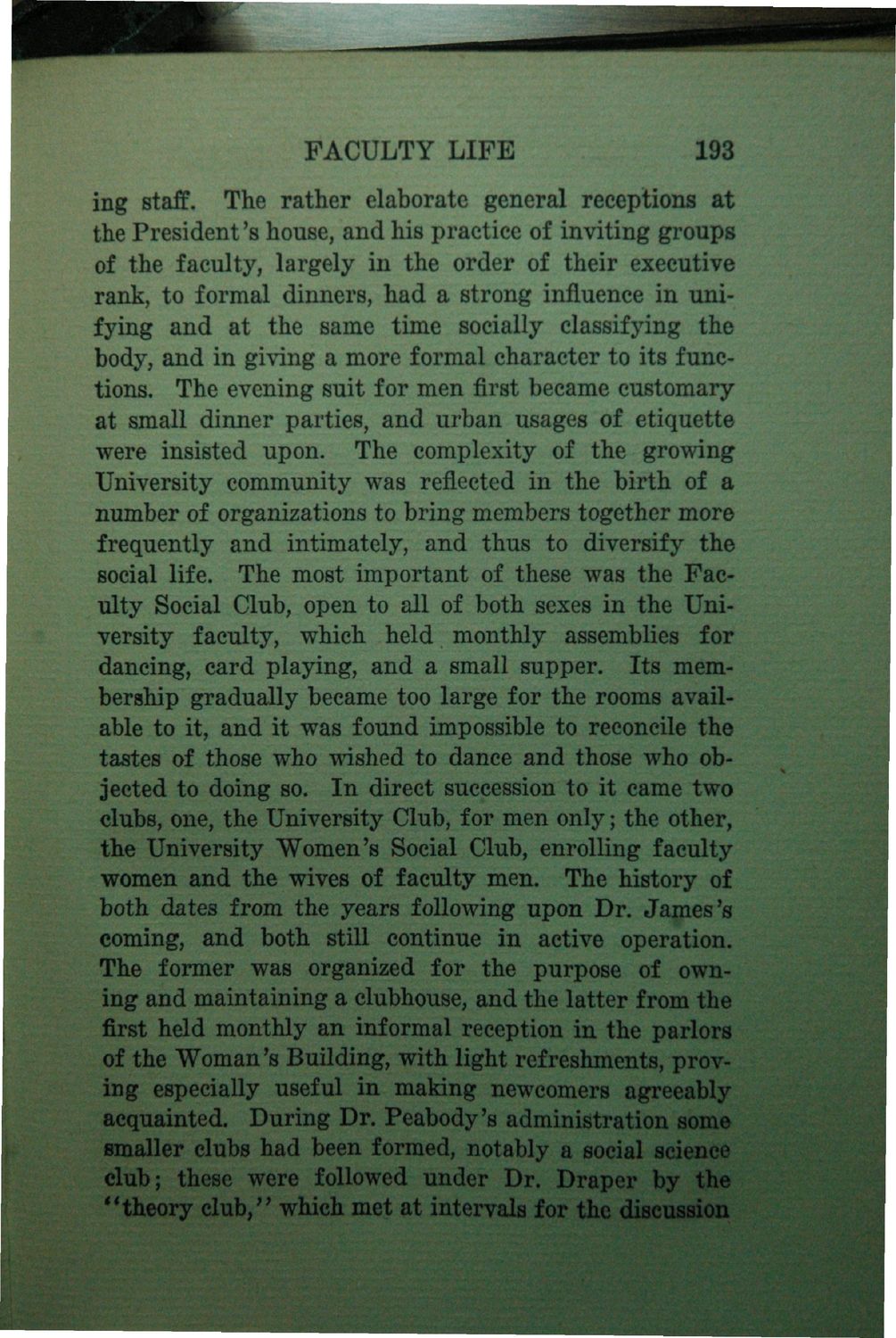| |
| |
Caption: Book - History of the University (Nevins)
This is a reduced-resolution page image for fast online browsing.

EXTRACTED TEXT FROM PAGE:
FACULTY LIFE 193 ing staff. The rather elaborate general receptions at the President's house, and his practice of inviting groups of the faculty, largely in the order of their executive rank, to formal dinners, had a strong influence in unifying and at the same time socially classifying the body, and in giving a more formal character to its functions. The evening suit for men first became customary at small dinner parties, and urban usages of etiquette were insisted upon. The complexity of the growing University community was reflected in the birth of a number of organizations to bring members together more frequently and intimately, and thus to diversify the social life. The most important of these was the Faculty Social Club, open to all of both sexes in the University faculty, which held monthly assemblies for dancing, card playing, and a small supper. Its membership gradually became too large for the rooms available to it, and it was found impossible to reconcile the tastes of those who wished to dance and those who objected to doing so. In direct succession to it came two clubs, one, the University Club, for men only; the other, the University Women's Social Club, enrolling faculty women and the wives of faculty men. The history of both dates from the years following upon Dr. James's coming, and both still continue in active operation. The former was organized for the purpose of owning and maintaining a clubhouse, and the latter from the first held monthly an informal reception in the parlors of the Woman's Building, with light refreshments, proving especially useful in making newcomers agreeably acquainted. During Dr. Peabody's administration some smaller clubs had been formed, notably a social science club; these were followed under Dr. Draper by the "theory club," which met at intervals for the discussion
| |